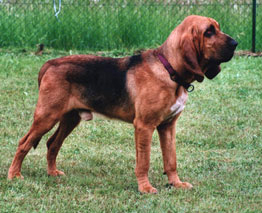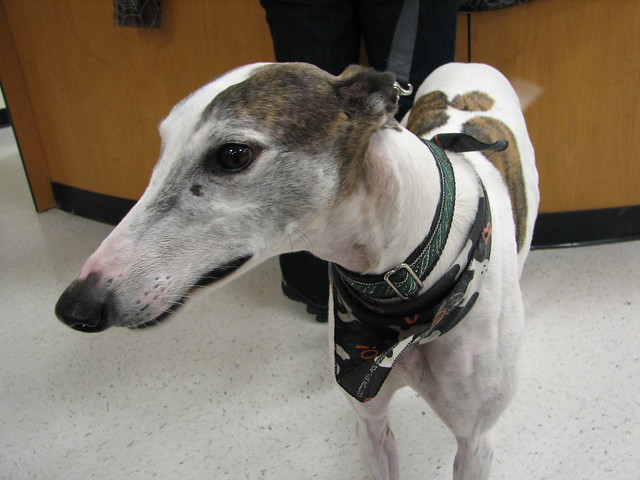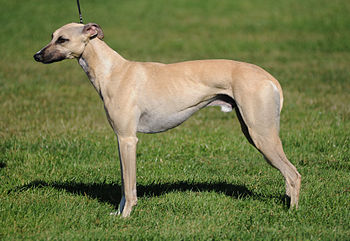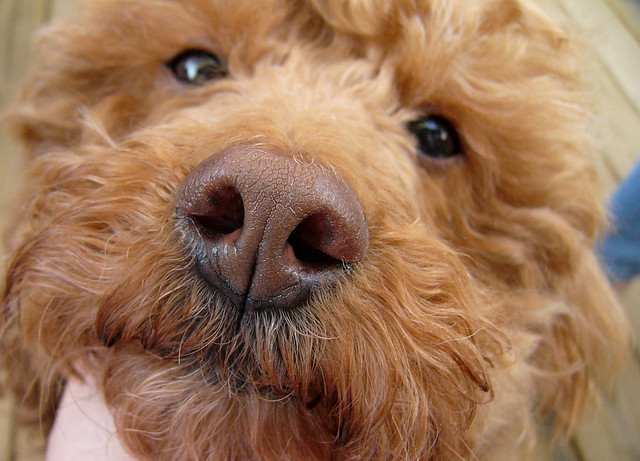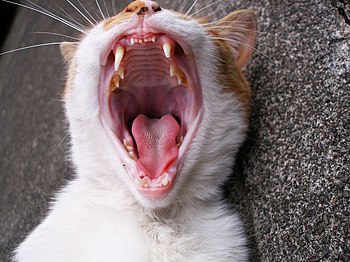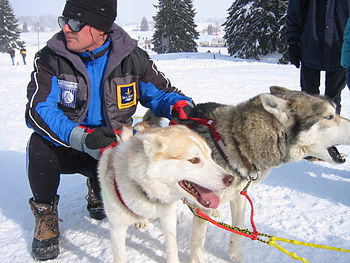Finding the perfect pet is difficult when there are so many different breeds to choose from. Use this guide to learn more about a few of the different breeds available.
Alaskan Malamute
The Alaskan Malamute is the oldest Arctic dog breed in the world and was bred as a working dog. They were used to pull sleds as well as hunt. This is a friendly dog that makes a great family pet. They love children but aren't fond of the company of other dogs. They are a smart breed that can learn quickly but tend to get bored easily.
To groom this breed you will need to brush their fur out weekly. Some of the health concerns associated with this breed include growth problems, eye problems, and hip dysplasia.
Bloodhound
The Bloodhound, also referred to as the St. Hubert's Hound or the Chien St. Hubert, is a Belgium breed that was bred tracking and hunting. This is one of the oldest hound breeds in the world. They typically grow to be between 23 and 27 inches tall and they usually weigh between 80 and 90 pounds. They have a short smooth coat that is waterproof. Their coat colors vary between black and tan and red and tan. Red Bloodhounds can also be found. They have folds of skin around their face and neck which help to gather scent and direct it towards their nose.
To care for this breed you will need to rub down their coats with a wet towel a few times a week. Their toenails will also need to be clipped on a weekly basis. Their ears also need to be tended to on a regular basis. For exercise, this breed needs daily runs and lots of playtimes. To keep their minds stimulated you may want to introduce tracking games. This breed has a few health concerns that you should be aware of: hip dysplasia, inverted eyelids, and bloating.
Boxer
The Boxer is a German breed that was created by crossing a Bullenbeisser, an unknown breed, and an English Bulldog. This breed was originally very aggressive and used for fighting and baiting bulls. However, over the years this breed lost their aggressiveness and it has become better suited for family life.
The boxer is a mid-sized dog breed that typically stands between 21 and 25 inches tall. They usually weigh between 66 and 70 pounds. Their coat is short, smooth, and shiny. Their coat can come in a variety of colors and have several different marking patterns. Some of the most common colors Boxers have included white, brindle, and fawn.
Brussels Griffon
The Brussels Griffon also referred to as the Griffon Belge, the Griffon Bruxellois, and the Belgian Griffon is a small Belgium dog breed that was used to kill vermin in horse stables. This interesting looking little fellow stands between 7 and 8 inches tall and weighs in at a whopping 6 to 12 pounds. They come in two varieties, rough hair and smooth hair. Both versions can be found with black, black and tan, or red-colored coats.
To care for this little dog you will want to brush their coat several times a week to prevent matting and to remove debris and dirt. They can usually get enough exercise to stay healthy by playing indoors, however, they also enjoy spending time frolicking outside and going for short walks. This dog will need to be trained and you will need to be consistent with your praise and corrections. If you plan on breeding this dog you should understand that they have a very difficult time whelping and only about 60 percent of puppies make it. In addition to reproductive problems, this breed also has respiratory issues and eye problems.
Chihuahua
The Chihuahua is a Mexican breed that was discovered about 100 years ago. They are a toy dog that stands between 6 and 9 inches tall and they typically weigh less than 6 pounds. Their coats come in two variations, short and long. The long coat is soft and can be either straight or wavy. The short coat is soft and dense. Both coat variations can come in just about any color or color combination.
To care for this breed you will need to groom their hair daily for the long-haired version, and as needed for the short hair version. This is an indoor pet that is not suited for extended periods of time outside. However, they do enjoy playing outside and going for short walks. To manage this breed's temperament you need to socialize it and train it early. Some of the health concerns that are associated with this breed include kneecap problems, eye problems, and tracheal problems.
English Springer Spaniel
The English Springer Spaniel also referred to as the Norfolk Spaniel, is a British breed that is known for being the oldest spaniel breed in the world. They were originally developed as a hunting dog. Their name derives from the springy steps that they take when on the hunt. Today this breed is still used as a hunting dog, however, they also make a great family pet if trained and socialized properly.
The English Springer Spaniel requires regular grooming to keep its coat shiny and clean. The best type of brush to use on their soft coat is a stiff bristle brush. Bathing should only be done when they need it. This breed also needs a lot of exercises. Long walks and plenty of playtime in the yard or in a fenced-in park each day will keep them healthy, happy, and out of trouble.
Fox Terrier (Smooth)
The Fox Terrier (Smooth) is a cute little dog that originated in England as a vermin hunter. This breed was grouped with the Wired Fox Terrier until 1984 when it was established as its own unique breed. Today this breed is still used to hunt vermin, however, it is also used as a family pet.
The Smooth Fox Terrier is a playful, energetic breed that loves playing with kids. If you have other pets in your family this breed may chase them, especially if they are small like cats. And they may try to take the dominant role if you have other dogs. To keep them happy and healthy they will need lots of exercise, lots of mental stimulation, and a lot of attention. They are intelligent and respond well to obedience training, however, they have a stubborn streak that may keep them from coming to you when you call them, especially if they are having fun.
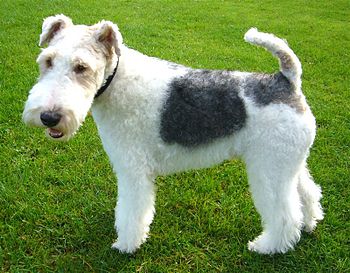 |
Basil the wire-haired fox terrier
(Photo credit: Wikipedia) |
Fox Terrier (Wire)
The Fox Terrier (Wire), also called the Wire Fox Terrier, is a British breed that was developed back in the 19th century as a vermin hunter. This breed most likely descends from the Beagle, Shropshire, and Cheshire. Today, this very active dog breed is used as both a family pet and a vermin hunter.
This little dog stands about 15.5 inches tall and weighs between 16 and 18 pounds. They have short wiry hair that gives them a plush look. Their coats should be predominantly white with tan and/or black markings. This dog makes a great playmate for kids. However, you will want to be careful what other pets you pair this dog with as it has a tendency to chase anything that is small than it is.
Greyhound
The Greyhounds is an Egyptian breed that was originally used to hunt wolves, wild boars, and deer. This breed was originally associated with aristocracy and high-class citizenship. Today this breed is used for racing, hunting, and for pets.
The Greyhound is a tall athletic dog that stands between 27 and 30 inches tall and weighs between 60 and 70 pounds. They usually have a short, close coat that comes in a variety of colors including multi-color, white, blue, fallow brindle, black, and red. This dog is truly a gentle giant that is great with kids. Since they were bred as hunting dogs they have a natural instinct to chase anything smaller then they are so they may not be the best housemates for small pets.
Puli
The Puli, also called the Pulik, the Hungarian Puli and the Hungarian Water Dog is a herding dog that originated in Hungary. It is a medium-sized dog that stands between 14 and 19 inches tall and weighs between 20 and 40 pounds. They have a shaggy and weatherproof outercoat and a soft wooly undercoat. Their coloring is usually pretty dark. The most common colors found in this breed include black, dark rust, gray, and apricot.
Sealyham Terrier
The Sealyham Terrier is a terrier breed that originated in Wales. This breed most likely developed from crossing the Cheshire Terrier, the Welsh Corgi, the Dandi Dinmont Terrie, the West Highland Terrier, and the Fox Terrier. It is a small dog that only stands about 12 inches high and it weighs between 18 and 20 pounds. They have a coat similar to the Scottish Terrier, however, their coat colors are slightly different. The Sealyham Terrier comes in shades of white, lemon, blue, badger pied, black, and brown.
Vizsla
The Vizsla, also called the Hungarian Vizsla, the Magyar Vizsla, the Drotszoru Magyar Vizsla, and the Hungarian Pointer is a Hungarian sporting dog breed. They are a medium-sized dog that stands between 22.5 and 25 inches tall and that weighs between 48.5 and 66 pounds. They have a short straight coat that comes in a brownish-red color. White traces on their chest and feet are common.
The Vizsla is a sweet nature dog that is gentle and tolerant. They make a great family dog and companion, as well as a great hunting dog.
Whippet
The Whippet is a British breed that was created by crossing the Greyhound with a variety of terrier breeds. This dog was originally used as a mouser and vermin hunter, however, they also made a living at the dog races. Today this dog is used for both huntings and as a companion.
The Whippet is a hound dog that stands between 17 and 20 inches tall and weighs about 28 pounds. They have a short, fine coat that comes in a variety of colors and patterns. When you look at this dog they look just like a miniature Greyhound.
Yorkshire Terrier
The Yorkshire Terrier is a toy dog breed that originated in Great Britain. They were originally used as a lap dog and fashion accessory by the Victorian aristocracy. Many dog experts believe that this breed was created by crossing the Skye Terrier, Clydesdale Terrier, the Manchester Terrier, the Paisley, and the Maltese.
The Yorkshire Terrier is petite and it only stands between 6 and 9 inches tall and it weighs between 3 and 7 pounds. They have a silk long coat that is variegated. Steel-blue and tan are common shades found in their coat.



